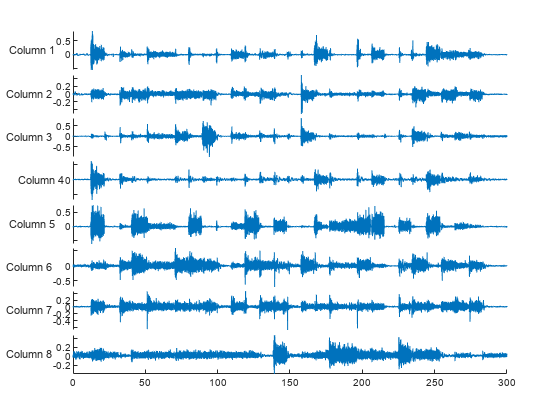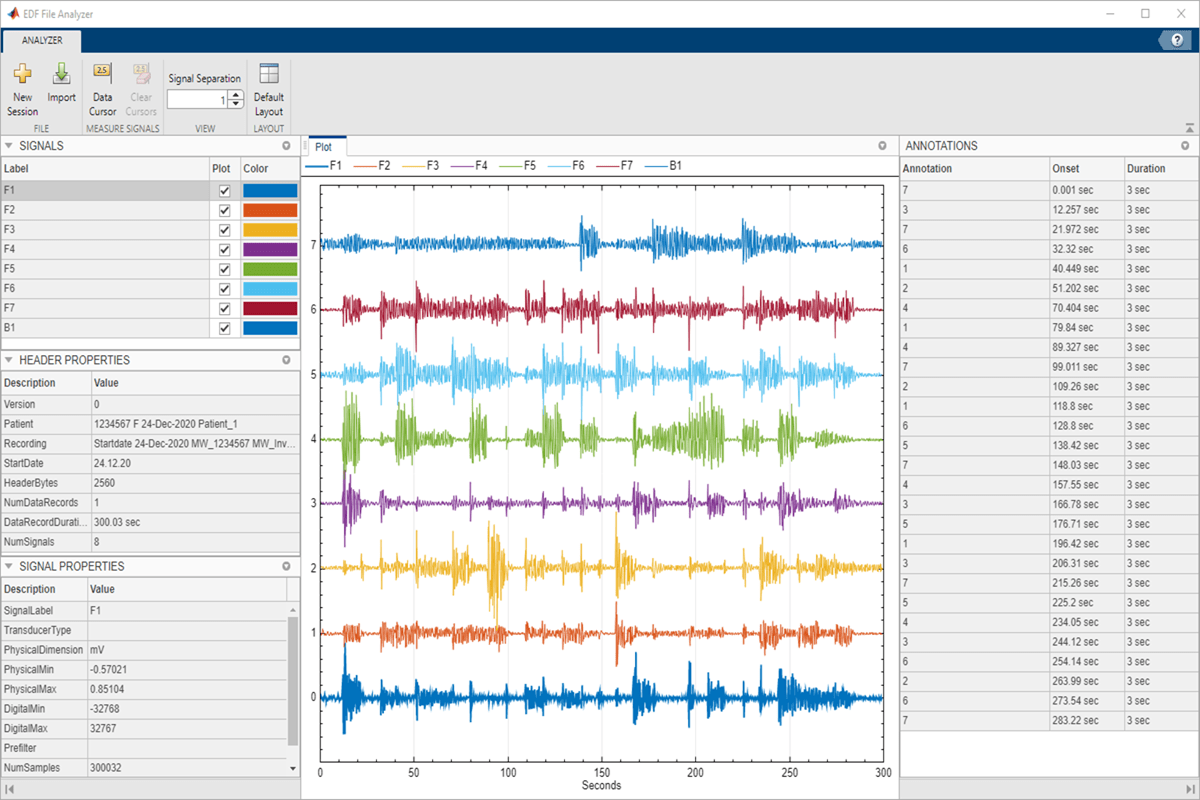edfwrite
Description
Create an edfwrite object to write or modify a European Data
Format (EDF) or EDF+ file.
Creation
Syntax
Description
edfw = edfwrite(filename)edfwrite object for an existing EDF or EDF+ file specified by
filename.
edfw = edfwrite(filename,hdr,annotationslist)edfwrite object and a new EDF or EDF+ file with annotations,
annotationslist.
edfw = edfwrite(filename,hdr,sigdata,annotationslist)edfwrite object and a new EDF or EDF+ file with signal data
and annotations.
edfw = edfwrite(___,PropertyName,Value)DataRecordTimes, AnnotationsEncoding, and InputSampleType.
Input Arguments
Properties
Object Functions
addAnnotations | Add annotations to EDF or EDF+ file |
addSignals | Add new signals to EDF or EDF+ file |
deleteAnnotations | Delete annotations from EDF or EDF+ file |
deleteSignals | Delete signals from EDF or EDF+ file |
modifyAnnotations | Modify annotations in EDF or EDF+ file |
modifyHeader | Modify header details of EDF or EDF+ file |
modifySignals | Modify signals in EDF or EDF+ file |
Examples
Tips
To create an EDF+ file containing only annotations, specify
NumDataRecordsandNumSignalsas0,DataRecordDurationas a duration scalar with value0, and all signal properties as empty.Launch the EDF File Analyzer app to visualize the signals in your EDF or EDF+ file.
References
[1] Chan, Adrian D.C., and Geoffrey C. Green. 2007. "Myoelectric Control Development Toolbox". Paper presented at 30th Conference of the Canadian Medical & Biological Engineering Society, Toronto, Canada, 2007.
[2] Kemp, Bob, Alpo Värri, Agostinho C. Rosa, Kim D. Nielsen, and John Gade. “A Simple Format for Exchange of Digitized Polygraphic Recordings.” Electroencephalography and Clinical Neurophysiology 82, no. 5 (May 1992): 391–93. https://doi.org/10.1016/0013-4694(92)90009-7.
[3] Kemp, Bob, and Jesus Olivan. "European Data Format 'plus' (EDF+), an EDF Alike Standard Format for the Exchange of Physiological Data." Clinical Neurophysiology 114, no. 9 (2003): 1755–1761. https://doi.org/10.1016/S1388-2457(03)00123-8.
Version History
Introduced in R2021a

